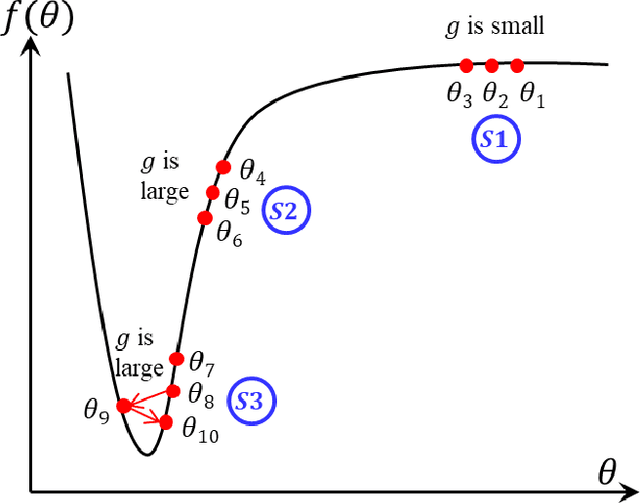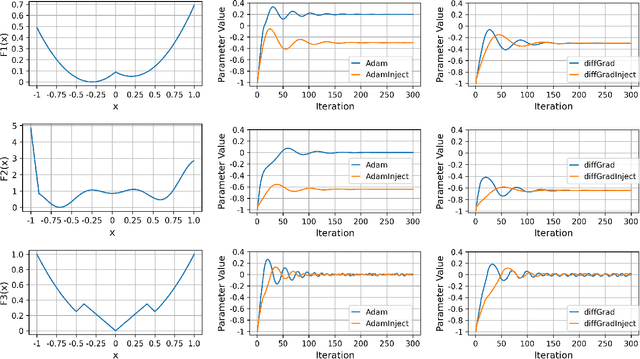S. H. Shabbeer Basha
Target Aware Network Architecture Search and Compression for Efficient Knowledge Transfer
May 12, 2022



Abstract:Transfer Learning enables Convolutional Neural Networks (CNN) to acquire knowledge from a source domain and transfer it to a target domain, where collecting large-scale annotated examples is both time-consuming and expensive. Conventionally, while transferring the knowledge learned from one task to another task, the deeper layers of a pre-trained CNN are finetuned over the target dataset. However, these layers that are originally designed for the source task are over-parameterized for the target task. Thus, finetuning these layers over the target dataset reduces the generalization ability of the CNN due to high network complexity. To tackle this problem, we propose a two-stage framework called TASCNet which enables efficient knowledge transfer. In the first stage, the configuration of the deeper layers is learned automatically and finetuned over the target dataset. Later, in the second stage, the redundant filters are pruned from the fine-tuned CNN to decrease the network's complexity for the target task while preserving the performance. This two-stage mechanism finds a compact version of the pre-trained CNN with optimal structure (number of filters in a convolutional layer, number of neurons in a dense layer, and so on) from the hypothesis space. The efficacy of the proposed method is evaluated using VGG-16, ResNet-50, and DenseNet-121 on CalTech-101, CalTech-256, and Stanford Dogs datasets. The proposed TASCNet reduces the computational complexity of pre-trained CNNs over the target task by reducing both trainable parameters and FLOPs which enables resource-efficient knowledge transfer.
Curvature Injected Adaptive Momentum Optimizer for Convolutional Neural Networks
Sep 26, 2021



Abstract:In this paper, we propose a new approach, hereafter referred as AdaInject, for the gradient descent optimizers by injecting the curvature information with adaptive momentum. Specifically, the curvature information is used as a weight to inject the second order moment in the update rule. The curvature information is captured through the short-term parameter history. The AdaInject approach boosts the parameter update by exploiting the curvature information. The proposed approach is generic in nature and can be integrated with any existing adaptive momentum stochastic gradient descent optimizers. The effectiveness of the AdaInject optimizer is tested using a theoretical analysis as well as through toy examples. We also show the convergence property of the proposed injection based optimizer. Further, we depict the efficacy of the AdaInject approach through extensive experiments in conjunction with the state-of-the-art optimizers, i.e., AdamInject, diffGradInject, RadamInject, and AdaBeliefInject on four benchmark datasets. Different CNN models are used in the experiments. A highest improvement in the top-1 classification error rate of $16.54\%$ is observed using diffGradInject optimizer with ResNeXt29 model over the CIFAR10 dataset. Overall, we observe very promising performance improvement of existing optimizers with the proposed AdaInject approach.
Deep Model Compression based on the Training History
Jan 30, 2021



Abstract:Deep Convolutional Neural Networks (DCNNs) have shown promising results in several visual recognition problems which motivated the researchers to propose popular architectures such as LeNet, AlexNet, VGGNet, ResNet, and many more. These architectures come at a cost of high computational complexity and parameter storage. To get rid of storage and computational complexity, deep model compression methods have been evolved. We propose a novel History Based Filter Pruning (HBFP) method that utilizes network training history for filter pruning. Specifically, we prune the redundant filters by observing similar patterns in the L1-norms of filters (absolute sum of weights) over the training epochs. We iteratively prune the redundant filters of a CNN in three steps. First, we train the model and select the filter pairs with redundant filters in each pair. Next, we optimize the network to increase the similarity between the filters in a pair. It facilitates us to prune one filter from each pair based on its importance without much information loss. Finally, we retrain the network to regain the performance, which is dropped due to filter pruning. We test our approach on popular architectures such as LeNet-5 on MNIST dataset and VGG-16, ResNet-56, and ResNet-110 on CIFAR-10 dataset. The proposed pruning method outperforms the state-of-the-art in terms of FLOPs reduction (floating-point operations) by 97.98%, 83.42%, 78.43%, and 74.95% for LeNet-5, VGG-16, ResNet-56, and ResNet-110 models, respectively, while maintaining the less error rate.
AutoTune: Automatically Tuning Convolutional Neural Networks for Improved Transfer Learning
Apr 25, 2020



Abstract:Transfer learning enables solving a specific task having limited data by using the pre-trained deep networks trained on large-scale datasets. Typically, while transferring the learned knowledge from source task to the target task, the last few layers are fine-tuned (re-trained) over the target dataset. However, these layers are originally designed for the source task which might not be suitable for the target task. In this paper, we introduce a mechanism for automatically tuning the Convolutional Neural Networks (CNN) for improved transfer learning. The CNN layers are tuned with the knowledge from target data using Bayesian Optimization. Initially, we train the final layer of the base CNN model by replacing the number of neurons in the softmax layer with the number of classes involved in the target task. Next, the CNN is tuned automatically by observing the classification performance on the validation data (greedy criteria). To evaluate the performance of the proposed method, experiments are conducted on three benchmark datasets, e.g., CalTech-101, CalTech-256, and Stanford Dogs. The classification results obtained through the proposed AutoTune method outperforms the standard baseline transfer learning methods over the three datasets by achieving $95.92\%$, $86.54\%$, and $84.67\%$ accuracy over CalTech-101, CalTech-256, and Stanford Dogs, respectively. The experimental results obtained in this study depict that tuning of the pre-trained CNN layers with the knowledge from the target dataset confesses better transfer learning ability.
An Information-rich Sampling Technique over Spatio-Temporal CNN for Classification of Human Actions in Videos
Feb 07, 2020



Abstract:We propose a novel scheme for human action recognition in videos, using a 3-dimensional Convolutional Neural Network (3D CNN) based classifier. Traditionally in deep learning based human activity recognition approaches, either a few random frames or every $k^{th}$ frame of the video is considered for training the 3D CNN, where $k$ is a small positive integer, like 4, 5, or 6. This kind of sampling reduces the volume of the input data, which speeds-up training of the network and also avoids over-fitting to some extent, thus enhancing the performance of the 3D CNN model. In the proposed video sampling technique, consecutive $k$ frames of a video are aggregated into a single frame by computing a Gaussian-weighted summation of the $k$ frames. The resulting frame (aggregated frame) preserves the information in a better way than the conventional approaches and experimentally shown to perform better. In this paper, a 3D CNN architecture is proposed to extract the spatio-temporal features and follows Long Short-Term Memory (LSTM) to recognize human actions. The proposed 3D CNN architecture is capable of handling the videos where the camera is placed at a distance from the performer. Experiments are performed with KTH and WEIZMANN human actions datasets, whereby it is shown to produce comparable results with the state-of-the-art techniques.
AutoFCL: Automatically Tuning Fully Connected Layers for Transfer Learning
Feb 05, 2020



Abstract:Deep Convolutional Neural Networks (CNN) have evolved as popular machine learning models for image classification during the past few years, due to their ability to learn the problem-specific features directly from the input images. The success of deep learning models solicits architecture engineering rather than hand-engineering the features. However, designing state-of-the-art CNN for a given task remains a non-trivial and challenging task. While transferring the learned knowledge from one task to another, fine-tuning with the target-dependent fully connected layers produces better results over the target task. In this paper, the proposed AutoFCL model attempts to learn the structure of Fully Connected (FC) layers of a CNN automatically using Bayesian optimization. To evaluate the performance of the proposed AutoFCL, we utilize five popular CNN models such as VGG-16, ResNet, DenseNet, MobileNet, and NASNetMobile. The experiments are conducted on three benchmark datasets, namely CalTech-101, Oxford-102 Flowers, and UC Merced Land Use datasets. Fine-tuning the newly learned (target-dependent) FC layers leads to state-of-the-art performance, according to the experiments carried out in this research. The proposed AutoFCL method outperforms the existing methods over CalTech-101 and Oxford-102 Flowers datasets by achieving the accuracy of 94.38% and 98.89%, respectively. However, our method achieves comparable performance on the UC Merced Land Use dataset with 96.83% accuracy.
 Add to Chrome
Add to Chrome Add to Firefox
Add to Firefox Add to Edge
Add to Edge